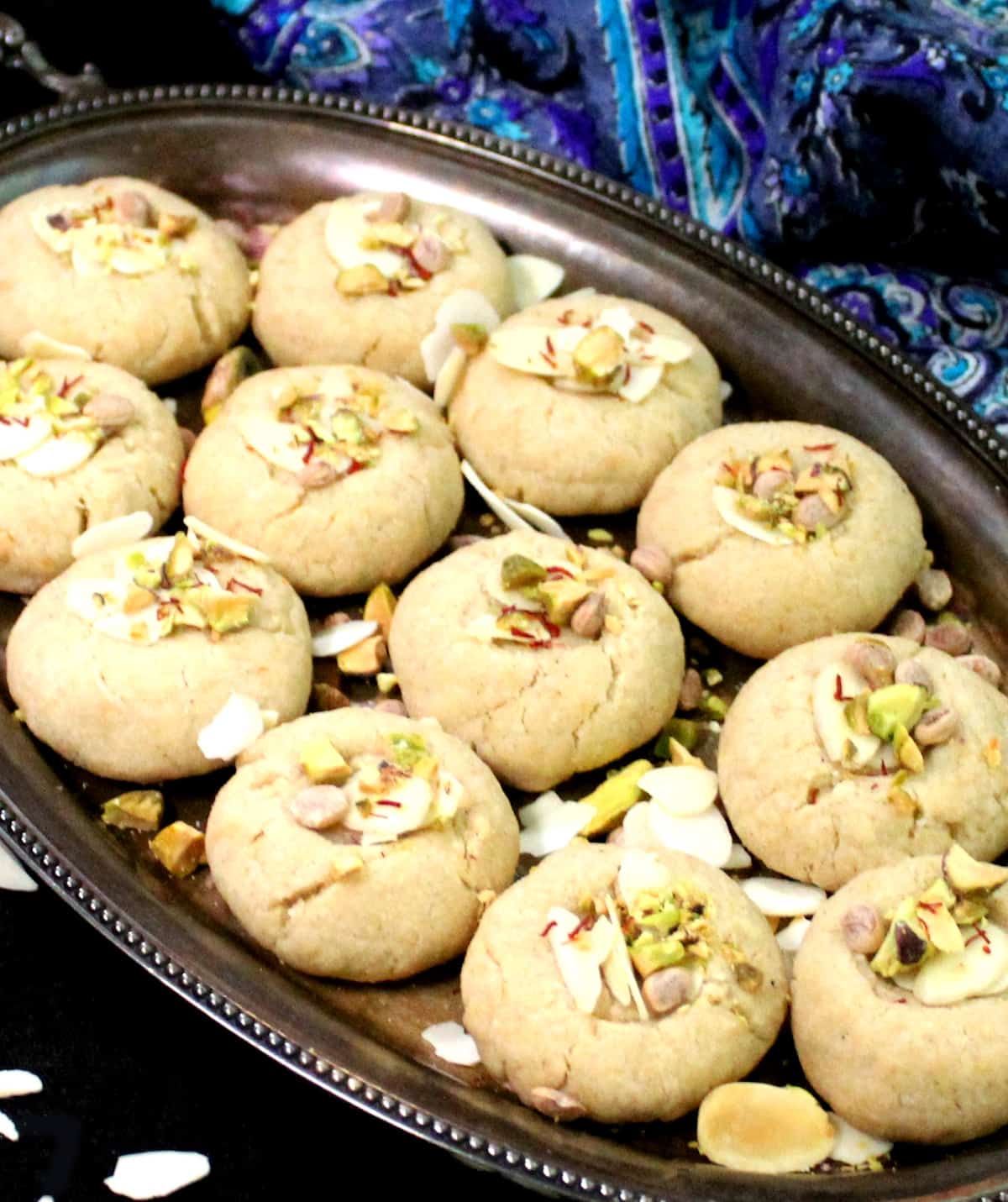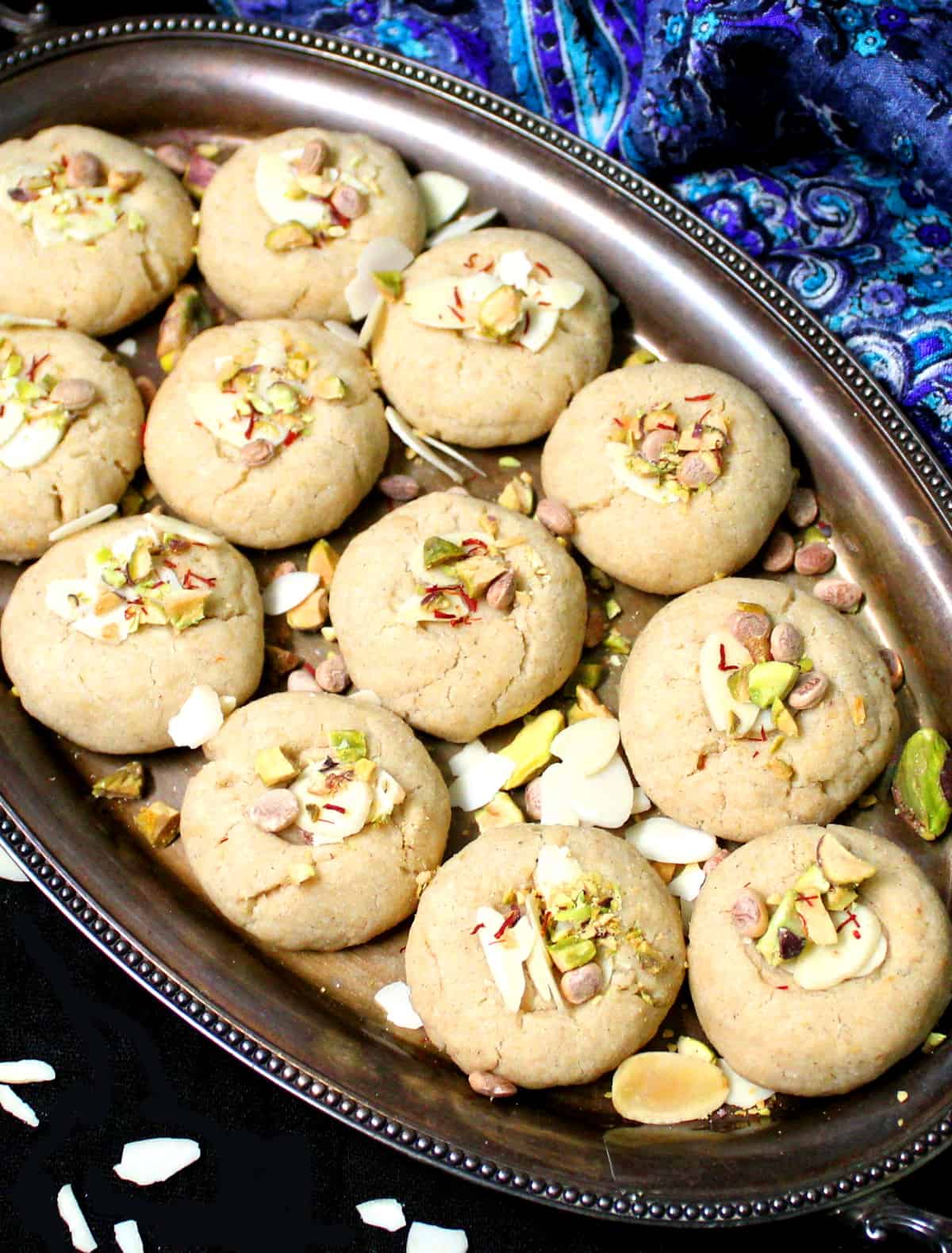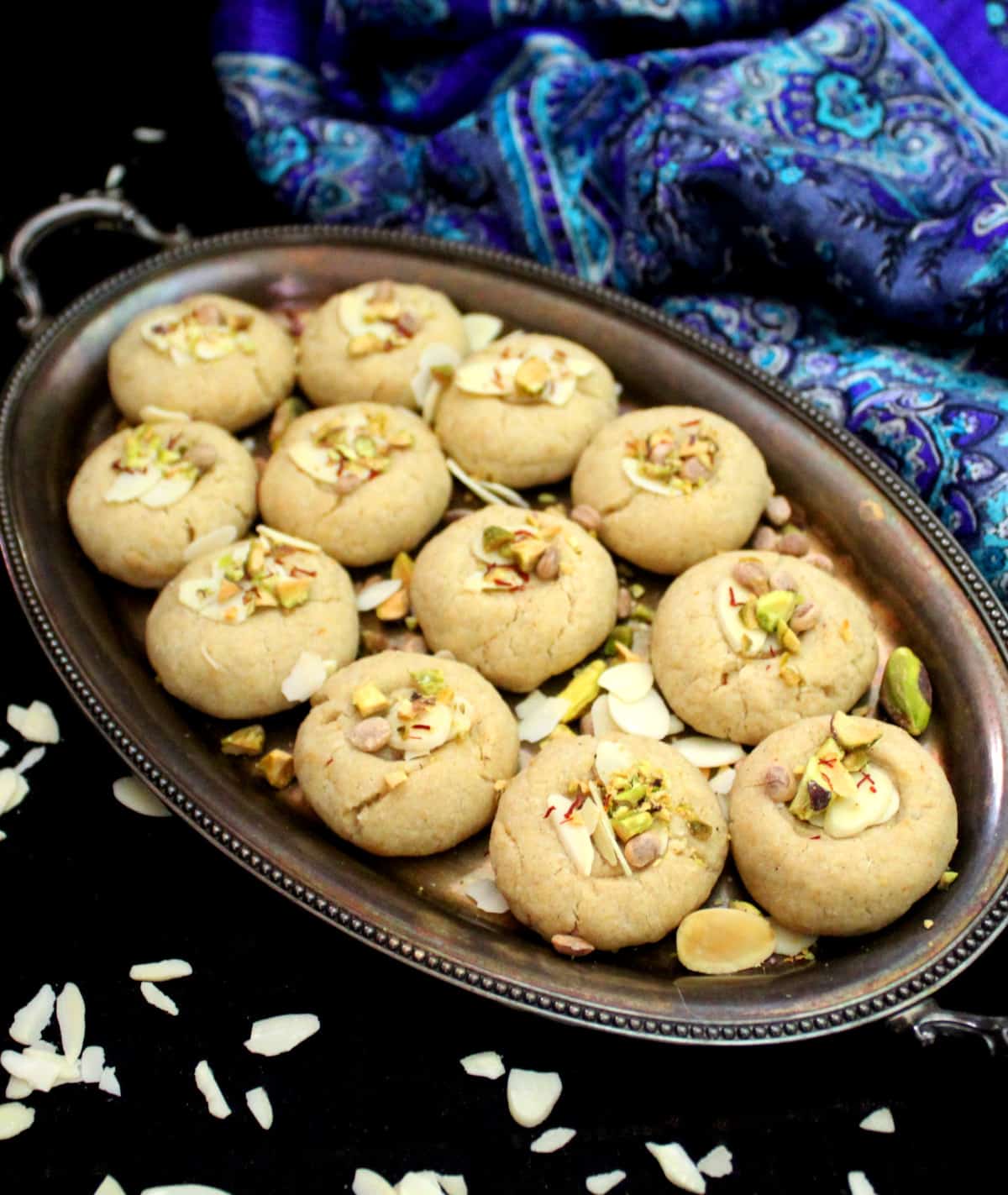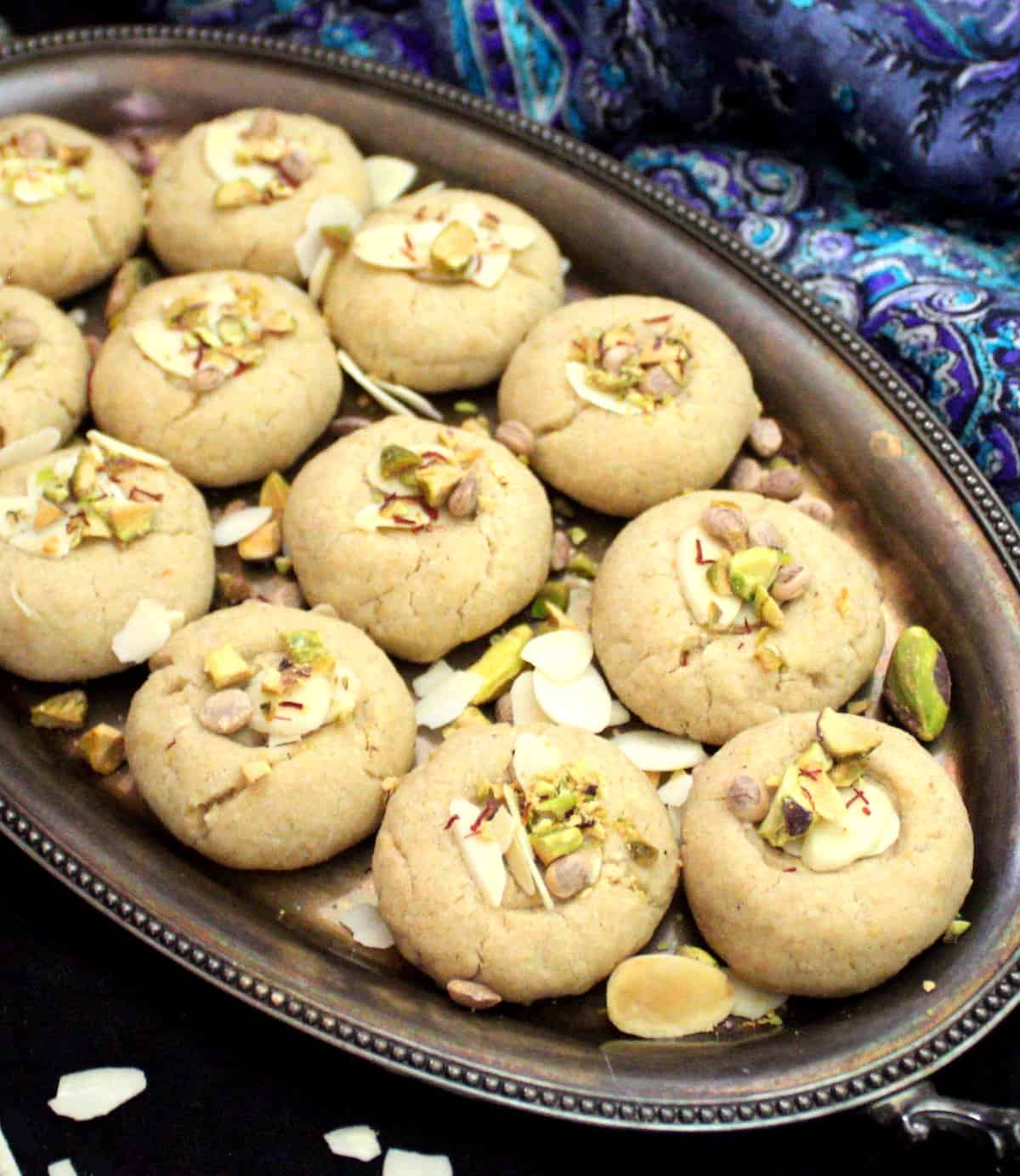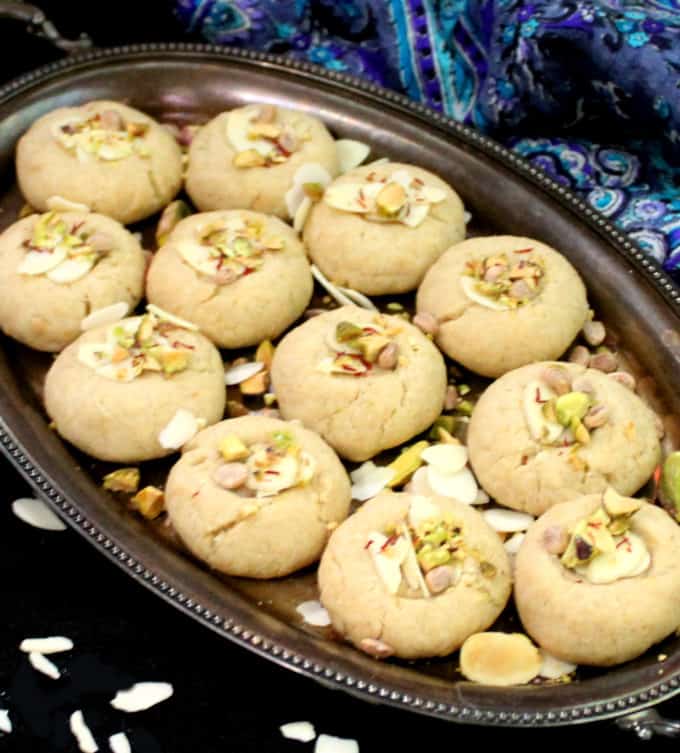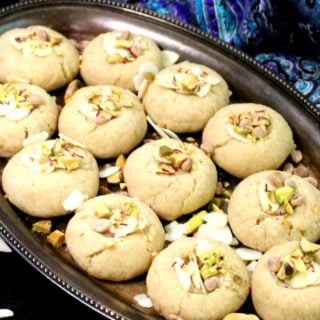If you’ve never eaten a nankhatai before, you are in for a treat today. And if you have, hold on to your seats because my ghee-free version of this amazing Indian “biscuit” or cookie is going to blow your mind. Although technically a cookie, because it gets shaped and baked like one, a nankhatai is not that different from an Indian sweet like a laddoo, where the flours get roasted first and then shaped. It has similar ingredients and flavors, with the difference being that the baking results in a very different, cookie-like texture. While a laddoo is soft and falls apart under your teeth, a nankhatai has a pleasant crispness that dissolves on your tongue. Baking cookies is not a traditional Indian thing–in my childhood cookies, or biscuits as they were called in India, including nankhatai, were always storebought. But if you have just 30 minutes to spare making a delicious–and vegan–version of a nankhatai at home is child’s play. Best of all, you need just seven ingredients for this recipe and it takes minutes to put together in one bowl. Now if that doesn’t make you want to go into the kitchen and start baking, well, you don’t deserve a nankhatai. 😉
Ingredients for vegan nankhatai:
You will need two kinds of flour for a traditional nankhatai: all purpose flour and besan or chickpea flour, and you will need some semolina or sooji. You can swap out some of the all purpose flour with almond flour for even better flavor, and you can make this cookie gluten-free by using all purpose gluten-free flour and subbing the semolina with cornmeal. You will also need vegan butter, which brings this cookie together (instead of ghee, used traditionally). There are no other liquids in here and that’s important because you won’t get the right texture if you add nondairy milk or water or applesauce, all of which will promote gluten formation, changing the texture of the cookie. It might be tempting to use coconut oil instead of the vegan butter, and while that would be okay, I would rather you didn’t. Coconut oil will overpower the flavor and while it’ll be pleasant enough, and admittedly coconut is a flavor that goes well with Indian sweets, it won’t taste as a nankhatai should. Use powdered sugar or confectioners’ sugar for the best results for this cookie. For the right look, flavor and texture, a nankhatai has to bake at a low temperature, and if you add granulated sugar it won’t have enough time to melt. Your cookies also won’t hold as well when you shape them. Although pure vanilla extract is not a traditional ingredient in nankhatai, I like adding it to mine because it helps build more flavor without being obvious. Finally, a nankhatai would simply not taste as it should without cardamom. Cardamom is a taste that’s almost impossible to separate from any Indian dessert dish, and it lifts a nankhatai from ordinary deliciousness into the realm of the divine. Here’s an important thing to remember: Indian desserts always, always require green cardamom, not the big, brown cardamom pods that are used in savory cooked foods like biryani. The cookie itself is nut-free. But you can add some optional garnishes to your cookie, like nuts or chocolate chips or even jam, although the cookie is delicious by itself. A nankhatai is unleavened–so there’s no baking powder or baking soda here.
How to make the best vegan nankhatai:
Your butter should be at room temperature and either soft or melted before you begin making the nankhatai. All you do then is put all of the ingredients together in a bowl and knead them into a soft dough. If your dough refuses to come together, you can try drizzling in a little more melted butter or oil. Again, don’t add any other liquid like water or milk to keep the texture as it should be. Shape the nankhatai by breaking off little bits of the dough and rolling them into balls on your palms. Then press them slightly to make little discs and, if you like, make a thumbprint impression in the middle. You can add some nuts or jam or chocolate chips inside the thumbprint. You can make these cookies as big or small as you’d like to. I like shaping them smallish because they are rich. I get about 28-30 cookies out of this dough, but you can definitely make 18-20 larger cookies. Bake in a preheated, 325 degrees Fahrenheit oven for 15-18 minutes. Smaller cookies will need 15 minutes, larger will need 18. The cookies should barely color and the bottoms should be a light gold-brown when they are done. Five minutes after they leave the oven, use a spatula to carefully lift the cookies (they’ll still be soft) and place them on a cooling rack. Let them cool thoroughly for the best texture.
Looking for more vegan Indian dessert recipes?
Vegan Barfi Vegan Gulab Jamun Vegan Kaju Katli Vegan Rava Laddu Vegan Zucchini Halwa
Vegan Nankhatai
Recipe card
Check to get new recipe updates by email.
